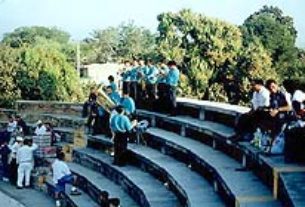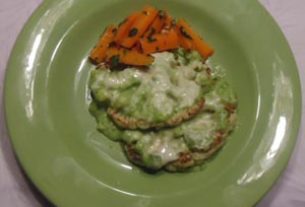One of the most fascinating aspects of adjusting to life in another country is exploring the cultural landscape of cooking and eating. In Mexico, food is an intrinsic part of festivals, rituals, and personal commemorations, but the daily meals are the focal points around which everyday life revolves. Mealtimes, especially comida — the main meal of the day — are treated as special intervals, to be approached with relish and respect for the work which went into their preparation.
Even those who do not have time for breakfast, or who pass up the late-night supper, sit down to a substantial comida in the afternoon. Translating comida as “lunch”, as is often done, does not do it justice, for it is nothing like the gringo version of lunch and is served later than most people north-of-the-border would eat lunch. It is much more like the old-fashioned mid-day dinners that people ate in the United States back when a larger percentage of the population were living in small towns or on farms and the three daily meals were called breakfast, dinner and supper.
Although some businesses in Mexico City have recently adopted nine-to-five office hours, the majority of people eat comida at home. Even in large cities, businesses usually close between two and four in the afternoon, the traditional comida time-span, and there is a rush to crowd onto buses and colectivos as people of all ages head home for the main meal. For those who cannot get there, most cities have a fair number of small restaurants which cater to the comida crowd and are open during the afternoon for comida corrida — literally “meal on the run” but more like a “daily special” — where, for a reasonable price, a traditional five-course comida is served. When traveling, we often take a break in the afternoon and look for a comida corrida restaurant, usually a good buy and a filling meal.
The comida, more than any other meal, is still structured much as it was during the time of the Spanish colonials, and hasn’t changed much even in the last hundred years. It starts off with a soup course, called the sopa aguada, which may be anything from a clear broth to a rich cream soup. This is followed by the sopa seca, which is either a rice or pasta dish. Although rice would normally be served with the main course in many other countries, Mexican tradition dictates that it be served separately. Next comes the main course, which may be a meat or chicken guisado — stew — or mole, meatballs in sauce, pork loin in adobo, chiles rellenos, or any of countless other regional specialties. The main course is followed by beans, for those who still have room for them, and many do.
Dessert is most frequently a lighter affair than the cakes and pastries that serve as between-meal treats. Often it consists of flan, gelatin, or fruit in syrup. Pitchers of fresh fruit drinks, aguas frescas, traditionally accompany the comida. A fresh, homemade fruit agua, such as jamaica or tamarindo, is a wonderful accompaniment to the many flavors found in the comida.
For the readers who have asked about Mexican mealtime customs and menus, the following is a menu with recipes for a traditional Mexican comida. If you are not used to preparing quite as many dishes for one meal, get together with friends and have each person prepare a different course. You will understand why the first thing people miss when they leave Mexico is the home cooking.
- Mexican noodle soup with chard: Sopa de fideos con acelgas
- White rice with vegetables: Arroz blanco con berduras
- Chicken in almond sauce: Pollo en salsa de almendras
- Beans in their own broth: Frijoles de la olla
- Coconut clan: Flan de coco


